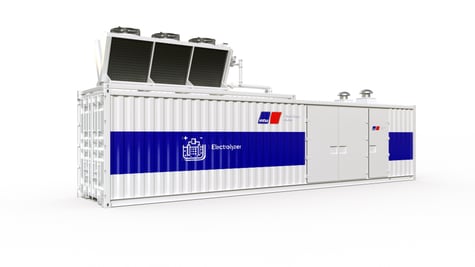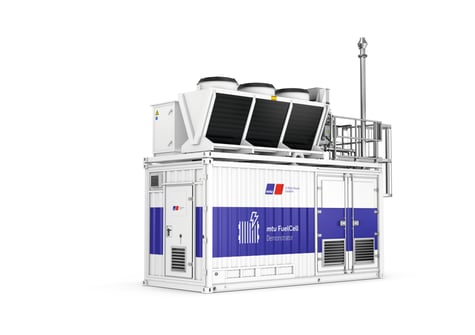The transition from fossil energy production is gaining momentum from the ongoing energy crisis. We are rapidly moving towards a hydrogen economy.
The raw materials for energy production are changing from fossil to renewables. The shares of wind and solar are growing rapidly. However, future production is intermittent: sometimes the power plants produce more than needed and sometimes the production is at zero. The need for energy storage is growing.
Energy is stored on a large scale by producing hydrogen from water by electrolysis.
"Green hydrogen is both a renewable energy source and an important industrial raw material. It also replaces grey hydrogen produced from natural gas," says Jussi Mäkinen, Country Manager of the Nordic energy and marine industry company BOS Power Finland Oy.

An experienced partner secures the future
When planning a hydrogen plant, the operation of the wind turbine supplying electricity to the hydrogen plant must be known precisely. As a design partner and equipment supplier, it is safe to choose companies that have been active in the field for a long time and can provide service and maintenance services and spare parts for the plant long into the future.
The volume of electricity production and its fluctuations affect the type of electrolyzer, compressor and hydrogen storage technology chosen. The size of the electrolyzer is of course measured according to need, but at the same time as large as possible. This is because as the size of the electrolyzer increases, the production cost per kilogram of hydrogen generally decreases.
"According to our research, the most important factor affecting the price of hydrogen is the production cost of electricity, after which the investment cost and efficiency of the electrolyzer play a significant role," says Mäkinen.
The choice of electrolysis technology determines the operation of the entire plant. PEM (proton exchange membrane electrolysis) is the most optimal choice when electrolysis is done alongside renewable energy production. Among electrolysis technologies, it reacts best to changes in electricity production. It allows us to achieve an efficiency of about 74 percent at these times and higher figures in the future.
The innovative PEM technology of Hoeller Electrolyzer, which Rolls-Royce partially bought in the summer, enables more efficient electrolysis than before. The new technology will be used in Rolls-Royce's future mtu electrolyzers.
 Making drives, propulsion and power generation CO2-free
Making drives, propulsion and power generation CO2-free
Options for the location
There are various options for the location of the hydrogen plant. When the plant is close to wind power, the losses of the electrolysis process is not transferred in the power grid between the wind power plant and the hydrogen plant.
Hydrogen plants are also placed near the district heating network, i.e. where there is a demand for waste heat. Oxygen as a byproduct of electrolysis is more challenging than extra heat, because it is difficult to find a use for oxygen in many places.
The need for hydrogen production is growing rapidly
One of the four electricity system visions published by Fingrid (Finland’s transmission system operator) at the end of August is "Hydrogen from wind". In that vision, electricity production in Finland will rise to 347 terawatt-hours by 2045. Wind power accounts for 85 percent of this. Such a large production requires substantial investments in hydrogen plants.
In Finland, hydrogen plants are being planned at a good pace and subsidies for new investments are currently being applied for, among other things, from the Ministry of Labor and Economy. As Europeans, we are very awake.
"Those players who are now the first to build their hydrogen plants will be the first to scale their production and respond to the market's growing demand for green hydrogen or synthetic fuels," says Mäkinen.
